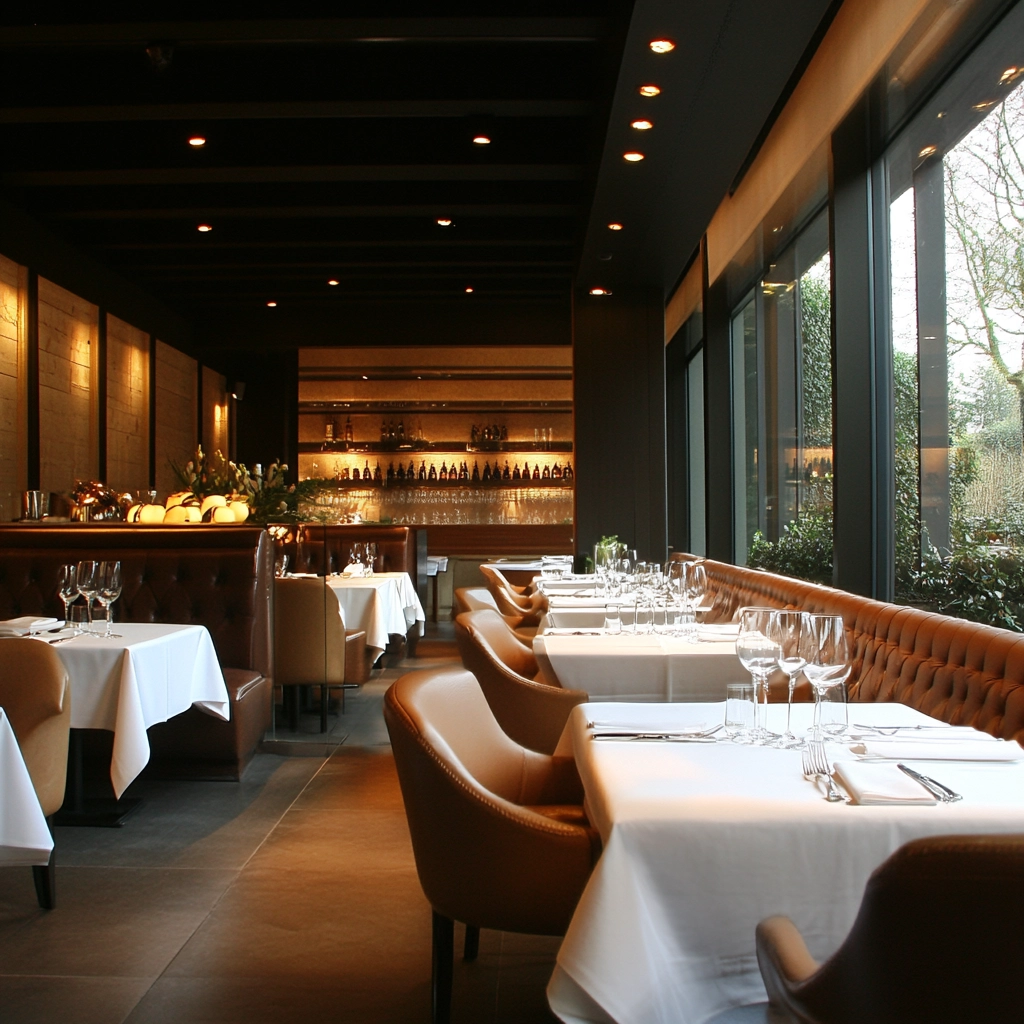Blog

Enhance Your Reservation Process
Streamline Your Café Reservations: Best Practices for Efficiency and Customer Satisfaction
In the bustling world of cafés, providing exceptional customer service is paramount to standing out in a competitive market. One crucial aspect that often gets overlooked is the efficiency of the reservation system. An efficient reservation system not only streamlines operations but also significantly enhances customer satisfaction. With the increasing demand for convenience and immediacy, customers expect to make reservations quickly and effortlessly. Therefore, implementing best practices in your café's reservation system is essential for operational success and customer happiness. <strong>The Importance of an Efficient Reservation System for Cafés</strong> An efficient reservation system serves as the backbone of a café's operations. It helps in managing customer flow, reducing wait times, and ensuring that resources are optimally utilized. By efficiently handling reservations, cafés can prevent overcrowding during peak hours and avoid empty tables during slower periods. This balance is critical in maximizing revenue and providing a pleasant dining experience. <strong>Overview of Benefits: Enhanced Customer Experience and Operational Efficiency</strong> Implementing a streamlined reservation system offers numerous benefits. It enhances the customer experience by providing convenience and reliability, which can lead to increased loyalty and positive word-of-mouth referrals. From an operational standpoint, it allows for better staff scheduling, inventory management, and overall smoother operations. Ultimately, an efficient reservation system contributes to the café's profitability and reputation. Implementing an Online Reservation System <strong>Choosing the Right Reservation Software for Your Café</strong> Selecting appropriate reservation software is the first step toward streamlining your booking process. Consider software that is user-friendly, scalable, and offers features tailored to your café's specific needs. Look for functionalities such as real-time table availability, customer data management, and integration capabilities with other systems you use. <strong>Integrating the System with Your Website and Social Media Platforms</strong> Once you've chosen the right software, integration is key. Ensure that your reservation system is seamlessly integrated with your café's website and social media platforms. This integration allows customers to make reservations directly from the platforms they use most, reducing barriers and encouraging more bookings. <strong>Ensuring Mobile Compatibility for On-the-Go Bookings</strong> In today's mobile-centric world, it's essential that your reservation system is mobile-friendly. Customers often search for dining options and make reservations while on the move. A mobile-compatible reservation system enhances user experience and increases the likelihood of securing bookings from customers using smartphones and tablets. Optimizing Table Management <strong>Utilizing Digital Floor Plans for Real-Time Table Availability</strong> Effective table management is crucial for maximizing seating capacity and minimizing wait times. Digital floor plans can provide real-time updates on table availability, allowing staff to seat customers promptly and efficiently. This technology helps in visualizing the café's layout, making it easier to manage reservations and walk-ins simultaneously. <strong>Setting Up Automated Notifications for Staff and Customers</strong> Automation can significantly improve communication between staff and customers. Setting up automated notifications for reservation confirmations, reminders, and updates ensures that everyone is informed and reduces the chances of misunderstandings. Staff can receive instant alerts about new bookings or changes, enabling them to prepare accordingly. <strong>Managing Walk-Ins Alongside Reservations Effectively</strong> While reservations are important, walk-in customers also contribute significantly to your café's revenue. Balancing reservations with walk-in customers requires strategic planning. Utilize your reservation system to allocate a certain number of tables for walk-ins, especially during peak hours. This approach ensures that you don't turn away potential customers and maintain a steady flow of guests. Reducing No-Shows and Last-Minute Cancellations <strong>Implementing Confirmation and Reminder Notifications</strong> No-shows and last-minute cancellations can be costly for any café. To mitigate this issue, implement a system of confirmation and reminder notifications. Sending automated messages to customers before their reservation time can significantly reduce the likelihood of no-shows. These reminders can be sent via email, SMS, or even through mobile app notifications. <strong>Establishing Clear Cancellation Policies</strong> Having a clear and fair cancellation policy is essential. Make sure that your policy is communicated clearly during the reservation process. This policy should outline any fees or penalties associated with late cancellations or no-shows. By setting expectations upfront, customers are more likely to honor their reservations or cancel in a timely manner. <strong>Considering Deposit Requirements for Large Parties</strong> For larger groups, consider requiring a deposit at the time of booking. This practice can help secure the reservation and compensate for potential losses if the party doesn't show up. Ensure that this policy is applied consistently and communicated clearly to avoid any misunderstandings. Enhancing Customer Communication <strong>Personalizing Confirmation and Reminder Messages</strong> Personalization can go a long way in enhancing customer satisfaction. Address customers by their names in confirmation and reminder messages, and include details about their reservation. Personalized communication makes customers feel valued and can improve their overall experience with your café. <strong>Providing Easy Options for Modifying or Canceling Reservations</strong> Flexibility is highly appreciated by customers. Provide straightforward options for customers to modify or cancel their reservations. This can be through an online portal, a mobile app, or by contacting the café directly. Making this process hassle-free encourages customers to inform you of changes promptly, allowing you to adjust accordingly. <strong>Collecting and Utilizing Customer Feedback to Improve Services</strong> Feedback is invaluable for continuous improvement. After their visit, invite customers to share their experiences and suggestions. Use this feedback to identify areas for improvement in your reservation system and overall service. Demonstrating that you value their opinions can also enhance customer loyalty.

Enhance Your Digital Footprint
Boost Your Restaurant’s Online Presence: Proven Strategies for Success
In today’s digital age, having a strong online presence is essential for any restaurant aiming to attract new customers and retain existing ones. With the vast majority of consumers turning to the internet to discover dining options, read reviews, and make reservations, your restaurant’s online visibility can significantly impact its success. This comprehensive guide will walk you through proven strategies to enhance your digital footprint, ensuring your restaurant stands out in the crowded online marketplace. <strong>The Importance of a Strong Online Presence for Restaurants</strong> The restaurant industry is highly competitive, and diners have more choices than ever before. A robust online presence not only increases your restaurant’s visibility but also builds credibility and trust with potential customers. By effectively leveraging digital platforms, you can showcase your menu, ambiance, and unique offerings, making it easier for people to choose your establishment over others. <strong>Overview of Key Strategies to Enhance Digital Visibility</strong> From optimizing your website to engaging with customers on social media, there are numerous tactics you can employ to boost your online presence. This guide covers essential strategies, including website optimization, social media engagement, local SEO practices, content creation, email marketing, community engagement, and performance monitoring. By implementing these techniques, you'll be well on your way to increasing your restaurant's online visibility and attracting more customers. Optimize Your Restaurant’s Website <strong>Ensure Mobile-Friendly and Responsive Design</strong> With a significant portion of web traffic coming from mobile devices, having a mobile-friendly website is crucial. A responsive design ensures that your site looks and functions well on all screen sizes, providing a positive user experience that can encourage visitors to explore your site further. <strong>Improve Website Load Speed for Better User Experience</strong> Website load speed is a critical factor in user satisfaction and SEO rankings. Slow-loading pages can frustrate users and lead them to leave your site. Optimize images, minimize code, and leverage browser caching to enhance load times and keep visitors engaged. <strong>Implement Clear Navigation and User-Friendly Interface</strong> A well-structured website with intuitive navigation helps users find the information they need quickly. Organize your menu, reservation system, contact details, and other essential information logically, ensuring that visitors can easily access each section. <strong>Highlight Menu, Location, and Contact Information Prominently</strong> Make sure your menu, address, phone number, and hours of operation are prominently displayed on your website. This information is often what visitors are seeking, and easy access can improve their overall experience and increase the likelihood of them choosing your restaurant. Leverage Social Media Platforms <strong>Choose the Right Platforms for Your Target Audience</strong> Not all social media platforms are created equal. Identify where your target audience spends their time online, whether it's Instagram, Facebook, Twitter, or another platform, and focus your efforts there to maximize engagement. <strong>Share Engaging Content: Photos, Videos, and Customer Stories</strong> Visual content is particularly effective in the food industry. Share high-quality photos of your dishes, behind-the-scenes videos, and stories from satisfied customers to entice potential diners and build a loyal following. <strong>Interact with Followers and Respond to Feedback Promptly</strong> Engagement is a two-way street. Responding to comments, messages, and reviews shows that you value your customers and are attentive to their needs. This interaction can foster a sense of community and encourage repeat business. <strong>Utilize Social Media Advertising to Reach a Broader Audience</strong> Paid advertising on social media platforms allows you to target specific demographics and expand your reach beyond your existing followers. Utilize these tools to promote special offers, events, or new menu items to attract new customers.